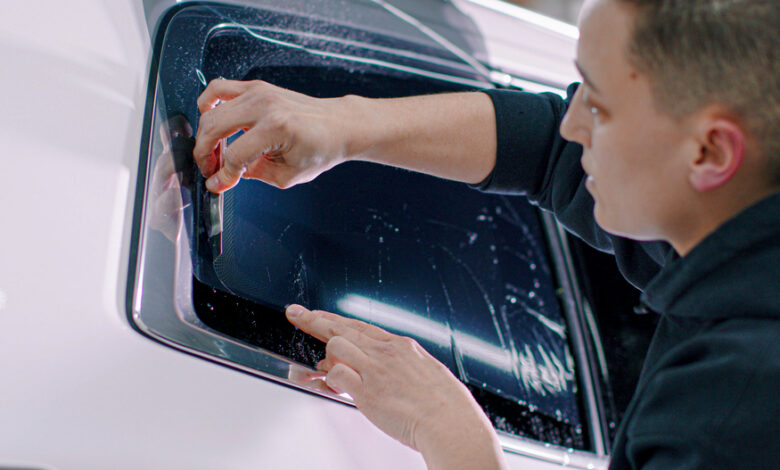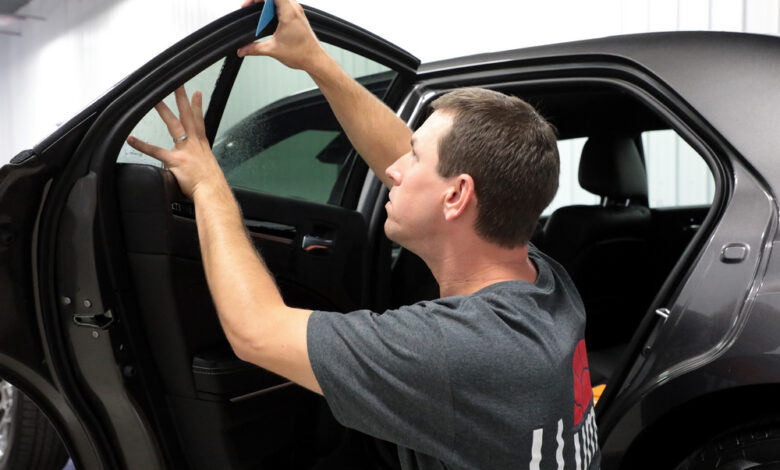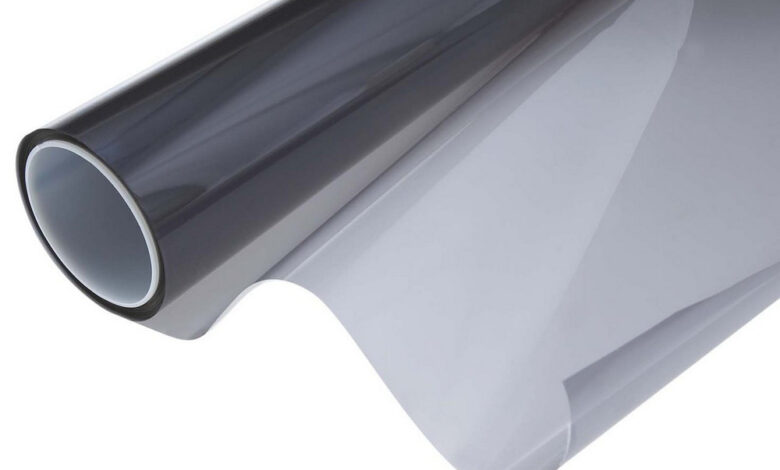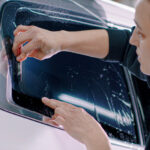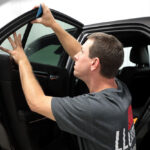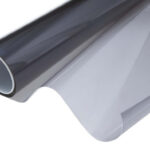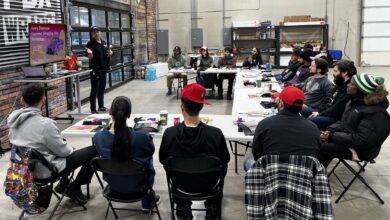Window Film: True or False?
Separating fact from fiction for tint sales & installation.
This article originally appeared in the February 2023 issue of THE SHOP.
It’s not just consumers who have questions when it comes to choosing the right window film for their vehicles. Professionals may not always have all the answers, either.
To help, tint manufacturers and suppliers clear up some common misconceptions and separate fact from fiction in true true-or-false fashion.
True or False: The window film market has seen major changes over the past decade.
TRUE
Mike Giles, a sales representative in the southeastern U.S. for 3M, says the market has changed in many ways in the last 10 years.
“Start first with the consumer. They are more educated. They are looking for informative and mobile-friendly websites. They are looking for comments and verifiable reviews. They also want their installations done right away, with the exception of returning customers, who will generally wait until the shop can do the work.”
Include the products themselves in those changes, he continues.
“Nano technology window films now lead the way in our industry. This has led to a more expensive product for the shop. However, the consumers want these high-performing window films and are willing to pay more than ever for them. The benefit is a superior product for the consumer and higher profits for the shop.”
Quality products are moving the industry forward, says Jim Koshak, regional technical specialist for Avery Dennison Graphics Solutions.
“The films are better-made, with improved solar properties and clarity,” he reports. “Quality films are better constructed and last longer, maintaining their properties longer on vehicles.”
Alex Sikorski, CEO of Premium Tech Window Film, agrees.
“The technology used in window film manufacturing continues to improve, bringing new products with improved benefits to the end user. The past 10 years have been marked using nanoceramic components and nano-carbon particles, creating products with higher infrared block that provide better comfort to users.”
Drivers appreciate the combination of added comfort and improved aesthetics.
“We’ve seen the market evolve from consumers purchasing dyed films to higher-performing ceramic window tint to add the combination of comfort and style to their vehicles,” says Dan Birkenmeier, regional marketing leader – Americas, for Eastman Performance Films.
True or False: These improvements also affect how the products are installed.
TRUE
“Many shops expect that all films should or will install basically the same,” Giles notes. “Window films with all of these newer technologies will install differently, at least in some ways. The installer notices it, for sure.”
The misconception comes when managers worry that their top installers can’t or won’t adapt.
“When I was first teaching installers the ‘dry shrink’ method many years ago, it was very difficult to convince them to change from a ‘wet shrink,’” Giles recalls. “I had to convince them to try it for just 30 days. It worked almost every time.”
Furthermore, future breakthroughs may mean more changes to come, he adds.
“What will the next new technology be for window film? We are working on that. When it comes out, shops and their installers might have to learn something new again. Adjusting our installation methods to the technology of the future is going to be important for all to succeed.”
True or False: Professional training is vital for proper installation.
TRUE
While the pros make it look easy, those new to tint films can dramatically flatten the learning curve with targeted instruction.
“For a new shop wanting to get into window film installation, it’s important that installers receive proper installation training,” says Koshak. “While some of the tools and techniques can be similar to that of, say, color-change film or even paint protection film, there are distinct differences. Many manufacturers such as Avery Dennison offer top-notch training classes from expert instructors in convenient locations all across the country.”
True or False: The window film industry is an old boy network.
FALSE
“I think there is a more diverse group of people working in the industry, including a lot more women installers and women-owned shops, which is terrific,” Koshak notes. “This dynamic is great because it can help extend the reach and education of window films as a way to customize a vehicle for style along with the practical and important benefits of added safety and comfort for drivers and passengers. It brings in a larger population of customers as well.”
True or False: Consumers buy window film on price alone.
FALSE
The industry has proven that educated buyers will pay more for quality films that offer added benefits.
“The biggest misconception is that customers will not pay for higher-performing products such as ceramic window tint,” Birkenmeier observes.
Instead, explaining value and showcasing a variety of films can lead to upsell opportunities.
“Offer a ‘good, better, best’ product portfolio and do not assume which product your customer will buy,” he continues. “Show each customer the full offering and utilize a heat demo unit to showcase the heat-rejecting qualities of higher-performing ceramic window tint products. It’s a great way to provide the benefits your customers seek while helping to generate incremental revenue.”
Never be afraid to demonstrate to consumers exactly what they are buying, says Sikorski from Premium Tech.
“Don’t assume customers know the different properties of window films besides ‘dark’ and ‘light,’” he explains. “Educating customers is essential to avoid selling a commodity driven by price only.”
The options for shops include carrying products from more than one manufacturer, Sikorski adds.
“In some cases, if a tint shop offers different price tiers of the same brand of film, customers may have to settle for less performance to get the lowest price,” he notes. “Offering another brand of ceramic film with the same quality and warranty gives shops an opportunity to sell a lower-cost installation and not lose business with customers constrained by tight budgets.”
True or False: The product is so well-known that marketing isn’t necessary.
FALSE
Every business needs to market its products and services. For today’s tint shop, that usually means starting with some type of online presence.
“Social media is a must these days,” says Koshak. “Promote your business and the product lines you carry, and showcase your completed installations to build awareness and referrals.”
He also recommends making connections with others that appreciate the benefits window film provides.
“Research companies that can use your services, like new and used car dealerships, body shops and limousine companies. Some of these may be small jobs at first, but the volume of work can add up.”
True or False: The evolution of the industry means leaving old approaches behind.
FALSE
This is particularly relevant when it comes to drumming up new business, says Giles from 3M.
“Assuming shops are doing all of the essential things such as website and social media activities, then perhaps it is time to get back to some of the basic things we did when first starting in the business,” he says. “When my business slowed, I started to look at it as my customers did. Was it convenient for them that I opened at 9 a.m. and closed at 5 p.m.? Maybe not, so we began opening at 8 a.m. and closing at 6 p.m. We also picked up some customers before or after work.”
He also suggests physical changes, if needed, to make the shop more noticeable and appealing.
“I wanted potential customers to see my shop at night as they drove by, so I installed a back lighted awning.”
Finally, he revisited tried-and-true marketing methods.
“If there was nothing booked then I at least sent someone out to pass out flyers,” Giles says. “We would get business every time we did that. If you cannot spend more on your SEO/social media activities, then look for things you can do at virtually no cost.”
Koshak recommends connecting with consumers as well.
“Be present at Cars and Coffee events and other car shows, and bring along a nice ride that you’ve tinted,” he says. “It’s a great way to show off your work and expertise to a captive audience. And don’t forget your business cards!”
True or False: Successful shops form strong partnerships.
TRUE
Making local connections is one way to broaden your reach with potential customers.
“Visit a glass shop,” Giles suggests. “Visit a body shop. A mechanic’s shop. Look for a connection with anyone that might refer business to you. Networking is one of the most valuable activities a small business owner can engage in to increase sales, and you might be surprised how many other businesses will want to refer their good customers to another fine business owner in order to keep them happy.”
